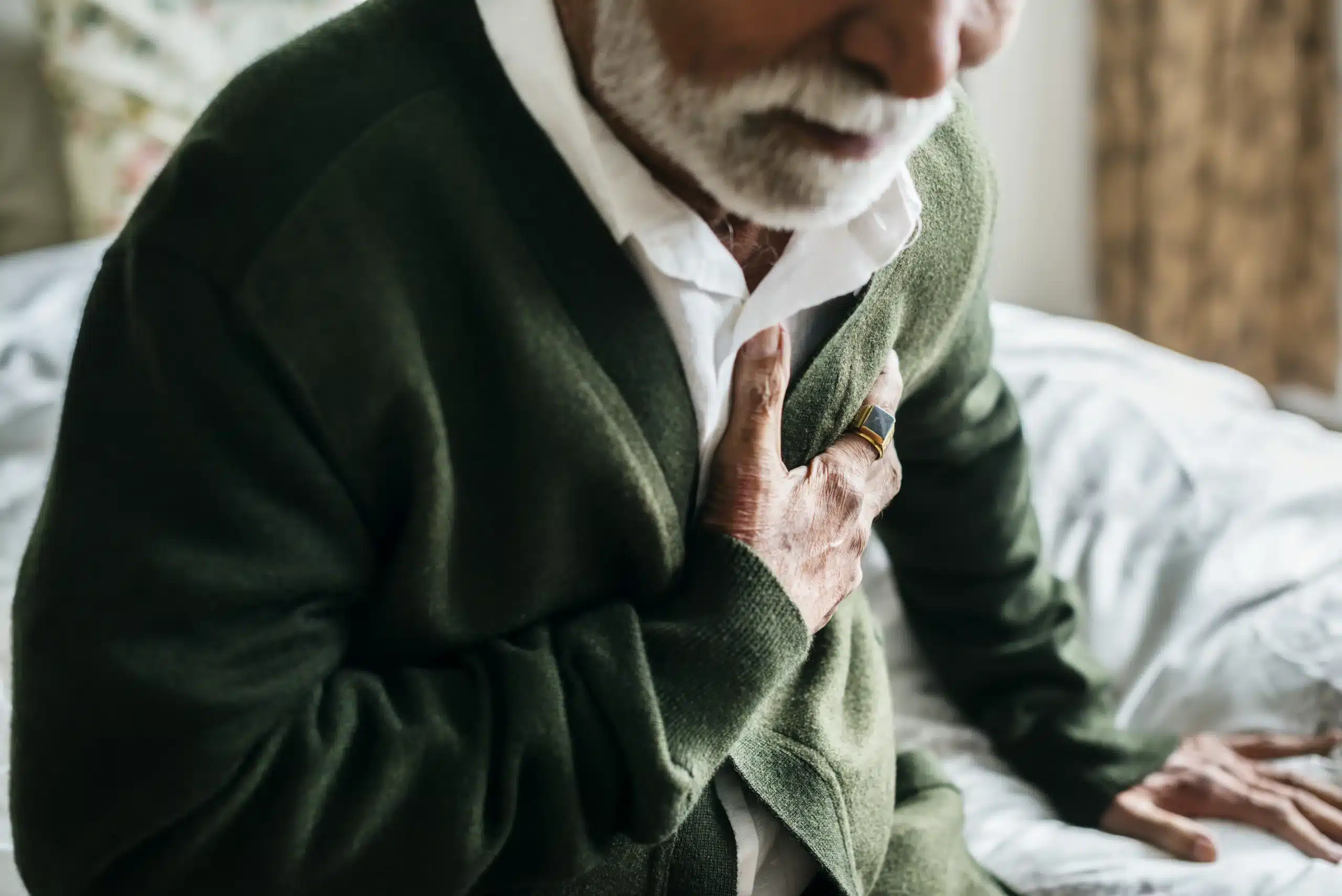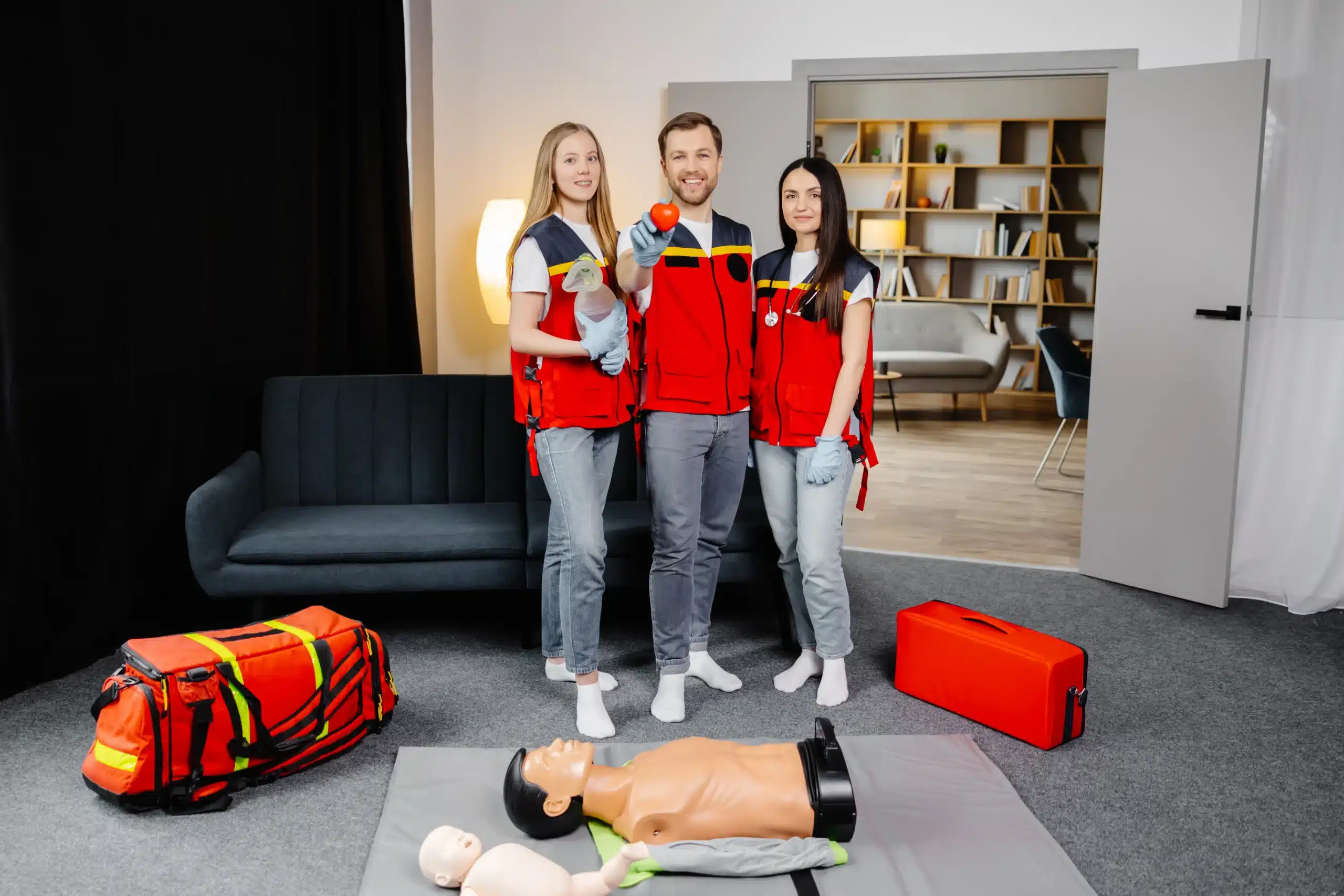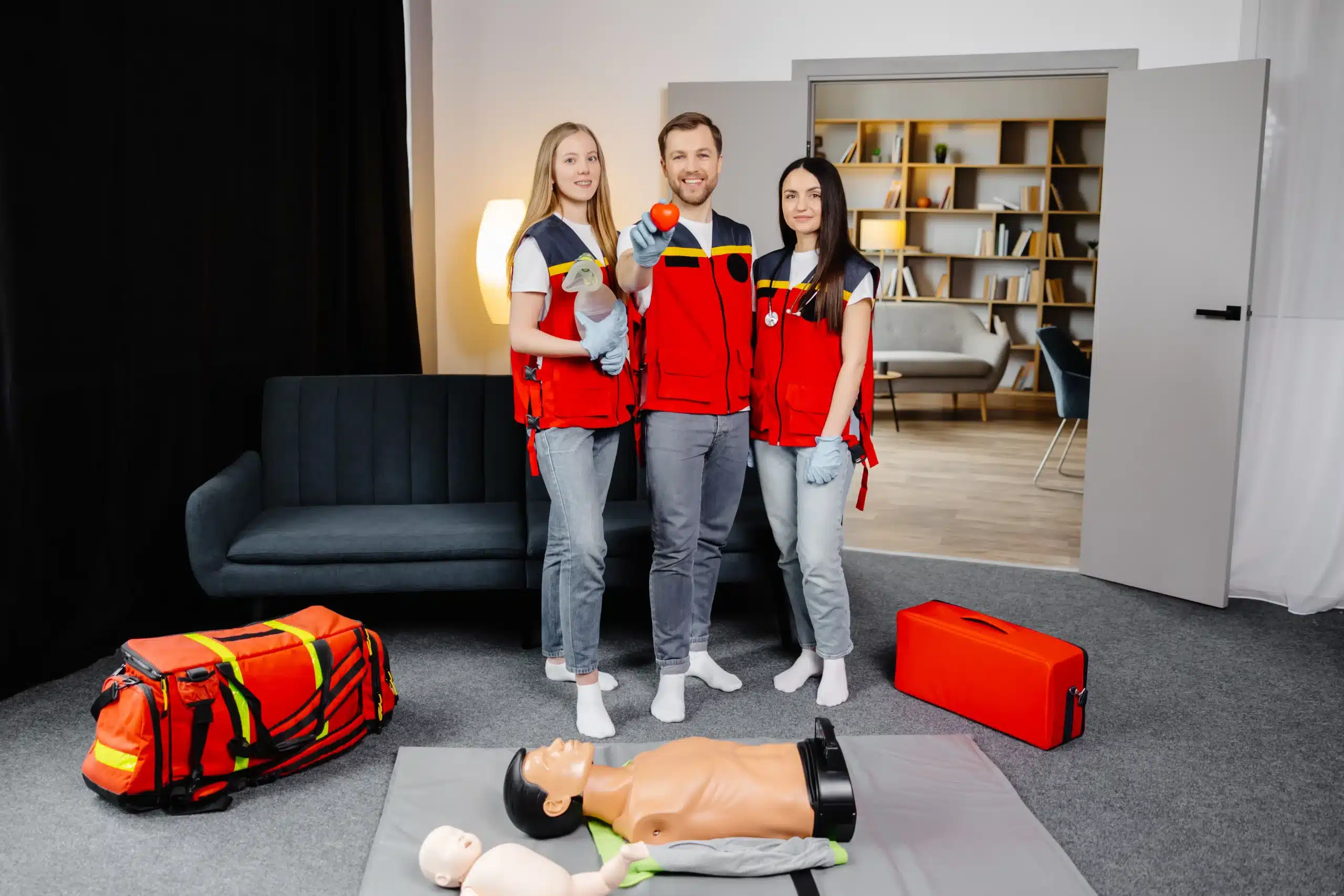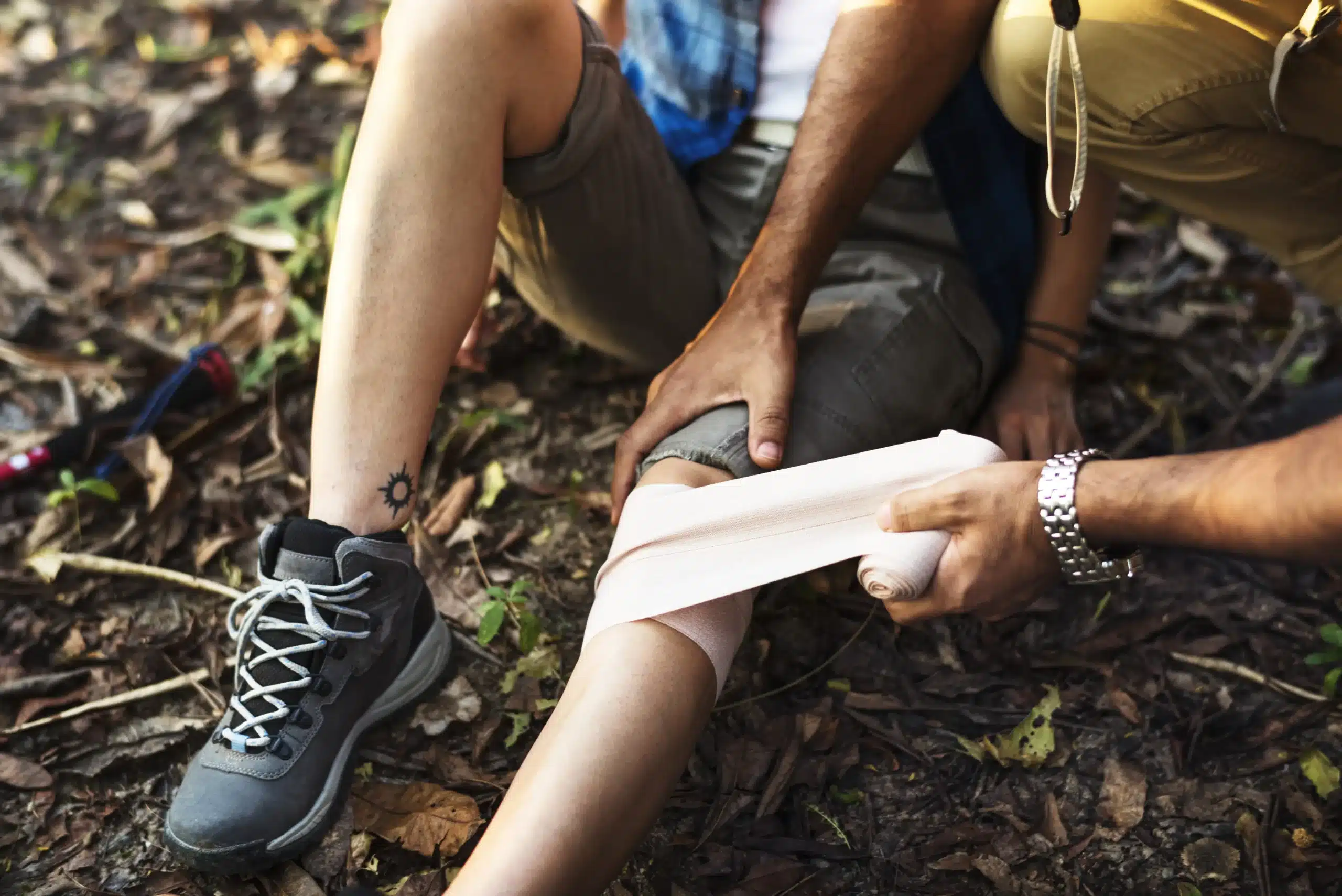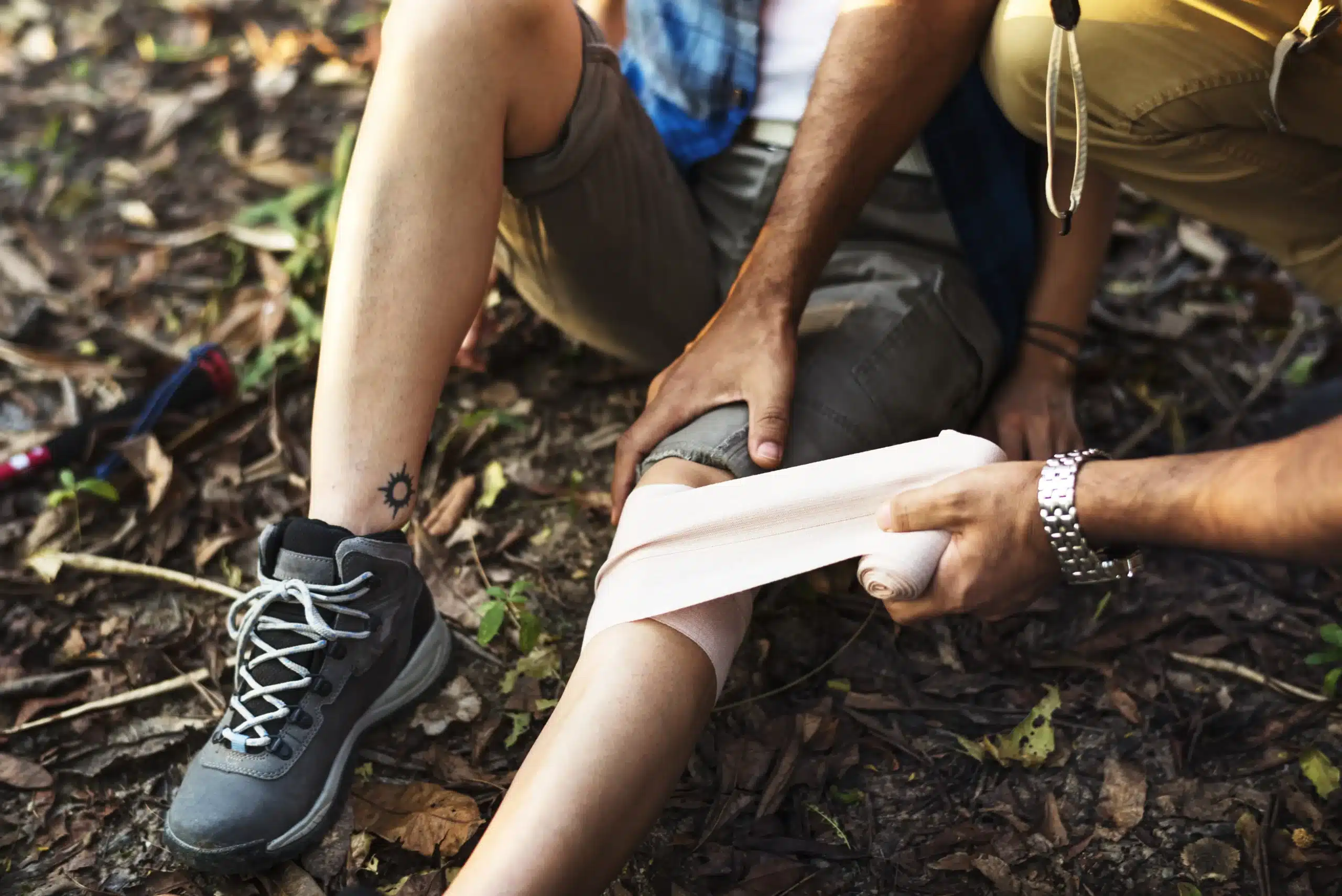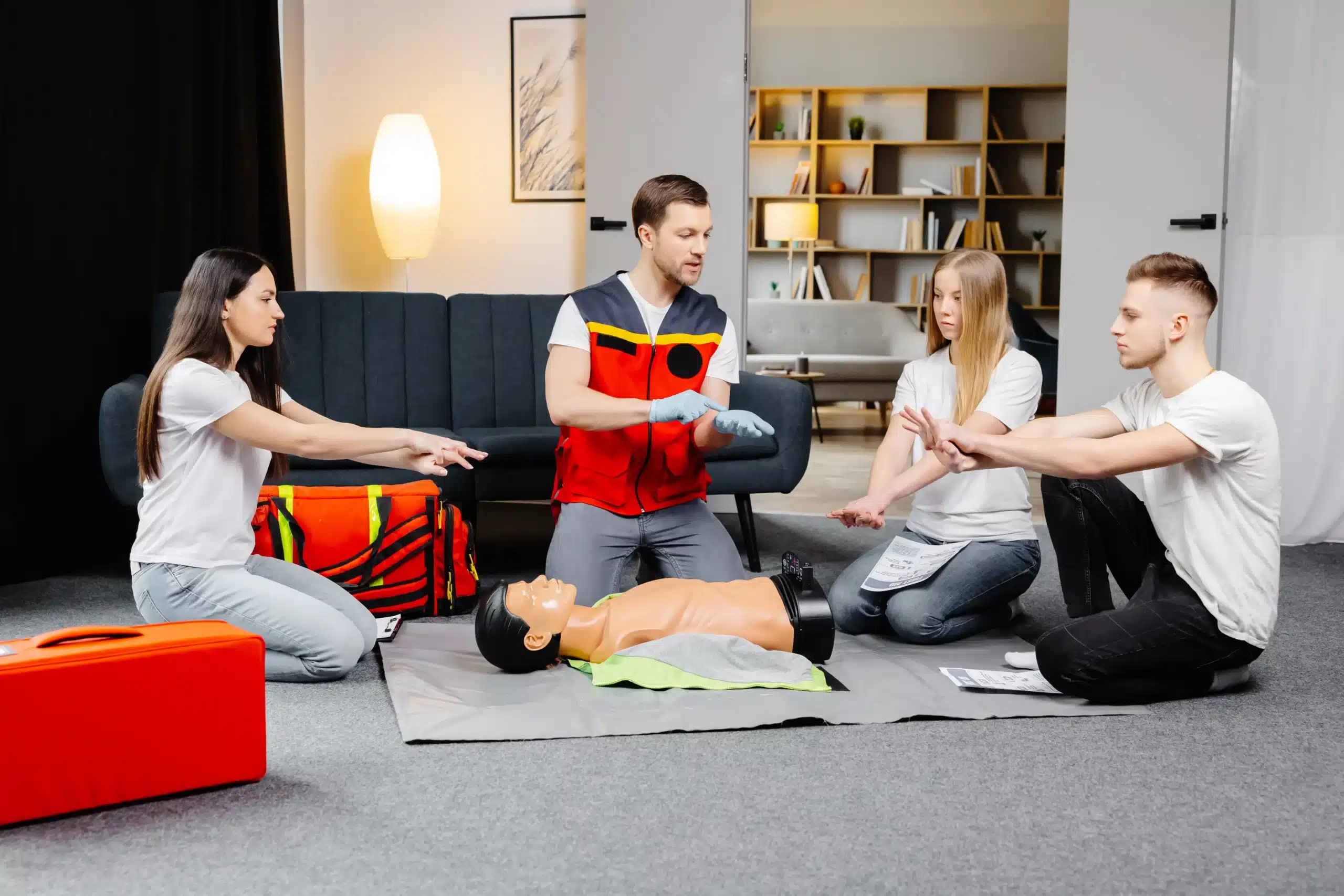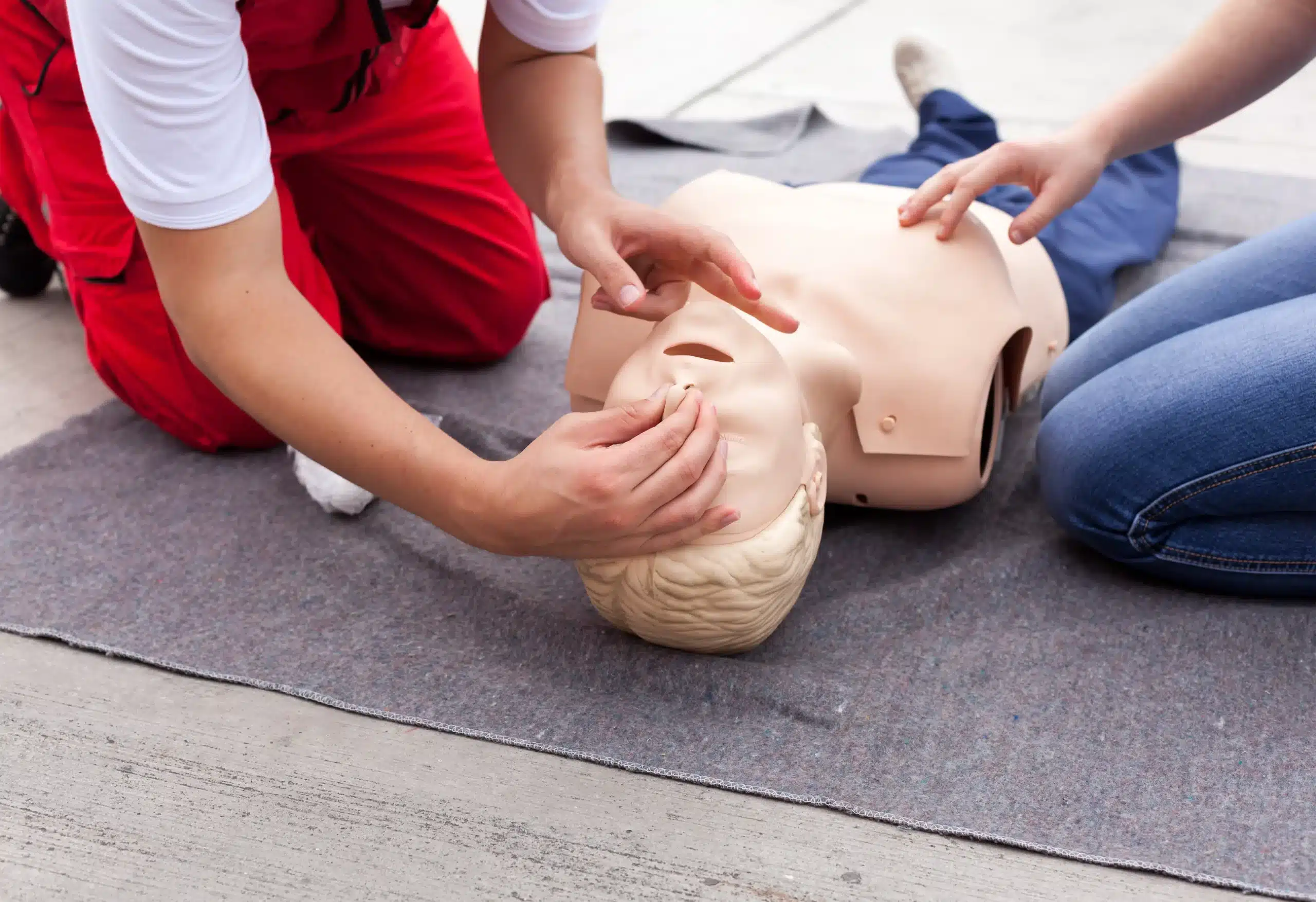Working in healthcare, especially in a place like American Canyon, means being ready for anything. From everyday bumps and bruises to more serious medical emergencies, having the right skills can make all the difference. That’s where BLS for healthcare providers in American Canyon comes in. It’s more than just a certification—it’s your toolkit for confidently handling emergencies and providing top-notch patient care. This guide breaks down everything you need to know about BLS, from the essential skills you’ll learn to finding the perfect training program right here in American Canyon. We’ll also debunk some common myths and explore how BLS certification can boost your career in healthcare.
Key Takeaways
- BLS certification provides essential life-saving skills: You’ll learn CPR, AED use, and how to manage choking, empowering you to confidently handle medical emergencies. These skills are invaluable for healthcare professionals and anyone wanting to be prepared.
- Finding the right BLS course is simple and affordable: Explore various options, including in-person, online, and hybrid formats. Compare providers and choose a course that aligns with your schedule and budget.
- Maintaining your BLS certification keeps your skills sharp: Recertify every two years to stay current with the latest guidelines and best practices. This ongoing commitment benefits your career and ensures you’re always ready to help.
What is BLS for Healthcare Providers?
What is Basic Life Support?
Basic Life Support (BLS) teaches you the skills to assist someone experiencing a heart attack or breathing difficulties. It covers essential techniques like CPR (chest compressions and rescue breaths), using an AED (a device that can shock the heart back into a normal rhythm), and clearing a blocked airway. These skills are fundamental for anyone in healthcare, but also valuable for anyone who wants to be prepared to help in a medical emergency. Learn more about our BLS certification course.
Why is BLS Important in Healthcare?
BLS certification is often a requirement for many healthcare jobs. It equips you with the confidence to respond effectively during critical situations, potentially improving patient outcomes. Effective BLS training also emphasizes teamwork and communication, crucial for coordinating care in emergencies. Clear roles and responsibilities within a medical team ensure everyone can work together seamlessly under pressure, significantly impacting a patient’s chances of survival and recovery.
What Skills Will You Learn in a BLS Course?
BLS certification equips you with the essential skills to respond confidently during medical emergencies. It’s more than just a certificate—it’s about gaining the knowledge and practical training to potentially save a life. Here’s a breakdown of the key skills you’ll develop:
CPR for Adults, Children, and Infants
CPR is the cornerstone of BLS. You’ll learn how to perform chest compressions and rescue breaths on adults, children, and infants. These techniques are crucial for maintaining blood circulation and oxygen flow when someone’s heart has stopped or they’re struggling to breathe. The course covers the differences in CPR techniques for each age group, preparing you for various situations. Our guide to BLS Certification in American Canyon offers a closer look at what BLS entails.
Using AEDs
An AED can be a life-saving device during sudden cardiac arrest. BLS training includes instruction on properly using an AED. You’ll learn how to assess the situation, operate the device, and integrate AED use with CPR. This hands-on training builds confidence in using this critical equipment. The Red Cross also offers BLS for Healthcare Providers training that covers AED use.
Managing Choking
Choking can be terrifying, but BLS training prepares you to handle it. You’ll learn techniques to help someone who is choking, including recognizing the signs and performing the Heimlich maneuver. These skills can help you quickly clear a blocked airway and restore breathing. This article debunks some common misconceptions about BLS.
Teamwork and Communication
In a medical emergency, effective teamwork is crucial. BLS courses emphasize clear communication and coordination among team members. You’ll learn how to work together efficiently, share information accurately, and provide support in high-pressure situations. This teamwork focus ensures everyone involved can contribute effectively to providing the best possible care. This article further explores the importance of team dynamics in Basic Life Support.
Where Can You Get BLS Certified in American Canyon?
Finding the right BLS certification course in American Canyon is easier than you think. With several excellent options available, you can find training that fits your schedule and learning style.
Local Training Centers
American Canyon offers convenient in-person BLS training options. Safety Training Seminars provides AHA-certified BLS courses right here in town, with a low-price guarantee and classes seven days a week. They also offer on-site training for groups. For smaller class settings, consider providers like Debbie’s CPR. Organizations like the American Red Cross often focus on healthcare provider training. For additional options and schedules, check out CPR Test Center and Weekend Hero CPR. Our guide to BLS certification in American Canyon offers a detailed comparison of local providers.
Comparing Courses
When selecting a BLS course, think about the format and time commitment. A full BLS course usually takes about 4.5 hours, while renewals are closer to 3 hours. Your BLS certification is valid for two years, then you’ll need recertification to keep your skills sharp. Some courses also cover team dynamics and roles during emergencies—a valuable skill, particularly in healthcare settings.
Online and Hybrid Learning
If you prefer flexibility, online and hybrid BLS courses let you learn at your own pace. Earning your online BLS certification shows initiative and allows you to train around your existing commitments. These courses cover the same essential material, including CPR and AED use. Some providers, like Heart Saver Institute, offer live online training, combining online convenience with real-time instructor guidance. This blended approach can be a great option for busy individuals.
How Does BLS Certification Work?
Getting your BLS certification is a straightforward process designed to equip you with the skills to respond effectively in emergencies. Here’s what you can expect:
Course Structure and Duration
BLS certification courses for healthcare providers combine classroom instruction, hands-on practice, and skills assessment. The full BLS course takes about 4.5 hours to complete. Renewal courses are shorter, typically around three hours. These courses emphasize teamwork, clearly defining each team member’s roles and responsibilities during a medical emergency. This focus on team dynamics helps healthcare professionals work together seamlessly under pressure.
Practice and Assessment
BLS courses provide ample opportunities to practice your skills. You’ll work with training manikins to perform CPR on adults, children, and infants and learn how to use an automated external defibrillator (AED). Instructors provide guidance and feedback to help you master these essential skills. You’ll also have access to manuals and online resources to support your learning. Many courses now integrate the American Heart Association’s RQI program for ongoing skill maintenance between certifications. Assessment typically involves a written exam and a practical skills evaluation to ensure you can confidently apply what you’ve learned.
Getting Your BLS Card
Upon successful completion of the course and assessments, you’ll receive your American Heart Association BLS Provider certification card the same day. This certification is valid for two years, after which you’ll need to recertify to maintain your skills and keep your certification current. This two-year timeframe ensures that healthcare providers regularly refresh their knowledge and stay prepared for emergency situations.
How Much Does BLS Certification Cost and How Long Does it Take?
Getting BLS certified is a worthwhile investment, and understanding the cost and time commitment upfront helps you plan. Let’s break down what you can expect in terms of pricing and the time involved.
Typical Prices in American Canyon
Safety Training Seminars is known for offering competitive BLS certification prices in American Canyon, and we often have group discounts available. Check our website or contact us directly for the most up-to-date pricing.
Factors Affecting Cost
Several factors can influence the cost of BLS certification. The type of course (initial certification or renewal) and the training provider both play a role. Comparing prices from different providers is a smart way to find the best fit for your budget. While cost might seem like an obstacle, remember BLS training offers significant long-term value.
Time Commitment for Certification and Renewal
The initial BLS certification course takes about 4.5 hours. Renewal courses are shorter, usually around 3 hours. Your BLS certification is valid for two years, after which you’ll need recertification to maintain your skills and credentials.
How Do You Maintain Your BLS Certification?
Keeping your BLS skills sharp is crucial, especially in healthcare. This section covers everything you need to know about maintaining your BLS certification.
How Long is Certification Valid?
BLS certification is valid for two years. After this period, you’ll need to recertify to stay current with the latest guidelines and best practices. This ensures you’re always prepared to provide effective care. Think of it like renewing your driver’s license—it’s a regular check-in to confirm your skills are still road-ready.
Recertification Requirements
Renewing your BLS certification is straightforward. You’ll enroll in a BLS recertification course and successfully complete all requirements. This typically involves a refresher course covering core BLS skills, a written exam, and a practical skills evaluation demonstrating your proficiency in performing CPR, using an AED, and managing choking. Recertification courses are designed to build upon your existing knowledge and refine your technique.
Staying Up-to-Date
Beyond formal recertification, staying informed about advancements in BLS is essential. Medicine is constantly evolving, so continuous learning is key to providing excellent care. Regularly reviewing resources like the American Heart Association guidelines and participating in continuing education can help you stay at the top of your game and dispel common misconceptions about BLS. Strong team dynamics and a clear understanding of roles and responsibilities within a medical team are also crucial for successful BLS implementation.
How Do You Choose a BLS Training Provider?
Finding the right BLS training provider is crucial for a positive learning experience. Several factors can influence your decision, so it’s helpful to know what to look for.
Key Factors
When choosing a BLS training provider, consider practical aspects like location and schedule. Think about whether you prefer a traditional classroom setting or a blended learning course format. Cost is always a factor, so compare pricing between different providers. Most importantly, check the instructor’s qualifications. Ensure they hold current American Heart Association (AHA) certifications and possess relevant experience. Finally, verify that the course meets any specific requirements for your job or profession.
Why Choose Safety Training Seminars?
Safety Training Seminars offers a comprehensive range of AHA CPR certification classes, including BLS, ACLS, PALS, and First Aid, right here in American Canyon and throughout Northern California. Our flexible scheduling accommodates busy professionals and those with demanding schedules. We understand that your time is valuable, so we strive to make our courses convenient and accessible. We also offer the RQI program for healthcare professionals seeking an efficient way to maintain their resuscitation skills. For those working in childcare, we provide the EMSA Child Care Health & Safety course.
Group Discounts and On-Site Training
We offer group discounts for businesses and organizations sending multiple participants to our BLS training. We also provide convenient on-site training, bringing the course directly to your workplace. This can save your team time and travel expenses. Contact us to learn more about our competitive pricing and how we can tailor our training to your specific needs.
How Do You Prepare for Your BLS Course?
Getting ready for your BLS class doesn’t have to be stressful. With a little preparation, you can walk into your training feeling confident and ready to learn. Here’s what you should know:
What to Expect
BLS teaches you the skills to assist someone experiencing a heart attack or breathing difficulties. The course covers core life-saving techniques like CPR (chest compressions and giving rescue breaths), how to use an AED (a device that can shock the heart back into a normal rhythm), and how to clear a blocked airway. You can find more details in our guide to BLS Certification in American Canyon.
Tips for Success
A few practical steps can make your BLS learning experience smoother. First, review the class schedules and choose a date and time that works best for you. Compare pricing from different training providers to find the best value. Critically, ensure your instructors are AHA certified, which is the gold standard. Consider factors like the class location, schedule flexibility, the course format (in-person, online, or blended), and the total cost. Also, confirm the instructor’s experience level and whether the course fulfills your specific job requirements. For additional guidance, check out our BLS Certification guide.
Training Materials and Resources
Most BLS courses for Healthcare Providers align with the 2010 (and earlier) AHA guidelines. Some “BLS Provider” courses might use the 2015 guidelines, so it’s a good idea to clarify this with your chosen provider. Safety Training Seminars offers a variety of AHA-certified CPR classes, including BLS, ACLS, PALS, NRP, and First Aid, right here in American Canyon. Knowing this ahead of time lets you focus on practicing your skills during the course itself.
Debunking BLS Certification Myths
It’s easy to get confused about BLS certification, especially with so much information online. Let’s clear up some common misconceptions.
Who Needs BLS?
One myth is that only doctors and nurses need BLS certification. In reality, it’s a valuable skill for anyone working in healthcare, education, childcare, or any field where medical emergencies might happen. Think teachers, lifeguards, coaches, and even security guards. Having more people trained in BLS makes workplaces and communities safer. If you’re unsure whether you need it, check with your employer or professional organization for industry-specific requirements.
Is Online Certification Valid?
Another misconception is that online BLS certification isn’t as good as in-person training. While in-person classes offer hands-on practice, many accredited organizations now have online courses that meet the same standards and are accepted by employers. These blended learning courses often combine online modules with in-person skills sessions for added flexibility. Choose a program from a reputable organization like the American Heart Association. You can find approved providers listed on their website.
Time Commitment Concerns
Many people believe getting BLS certified takes a huge chunk of time. It does require some dedicated effort, but it’s more manageable than you might think. Many courses can be completed in a single day, and online components offer flexibility. Plus, your certification is valid for two years. That’s two years of being prepared to help in a medical emergency. The time invested in training is small compared to the potential to save a life.
How Can You Make the Most of Your BLS Certification?
Getting your BLS certification is a significant achievement. It equips you with life-saving skills and opens doors to various career opportunities while enhancing your professional profile. This section explores how you can maximize the benefits of your BLS certification.
Using BLS in Your Career
BLS certification is a valuable asset in many fields. It’s essential for healthcare professionals, including doctors, nurses, paramedics, and emergency medical technicians. But it’s also highly relevant for those working in education, childcare, fitness, and other professions where medical emergencies can arise. A BLS certification demonstrates your commitment to safety and preparedness, making you a more desirable candidate. For example, many childcare facilities require their staff to be BLS certified to ensure a safe environment and provide parents with peace of mind. Similarly, holding a current BLS certification can give you an edge when applying for positions in healthcare settings, especially hospitals and clinics.
Improving Patient Outcomes
For healthcare providers, BLS is more than just a certification; it’s a core skill set that directly impacts patient outcomes. Effective BLS intervention during critical situations significantly improves survival rates. By mastering techniques like CPR and using an AED, you increase the chances of a positive outcome for patients experiencing cardiac arrest or other life-threatening events. BLS training emphasizes early recognition and intervention, crucial for minimizing the damage caused by these emergencies. The ability to provide prompt and effective BLS can be the difference between life and death.
Enhancing Team Performance in Emergencies
BLS training also plays a vital role in improving team performance during emergencies. Effective communication and coordination are essential for the seamless execution of BLS techniques. BLS courses often incorporate simulations and scenarios that allow healthcare providers to practice working together under pressure. This builds trust and familiarity among team members, enabling them to respond more efficiently and effectively in real-life emergencies. Clear communication, role clarity, and efficient task distribution are all emphasized in BLS training, leading to better patient care and improved outcomes, especially in high-stress environments like emergency rooms and intensive care units.
Related Articles
- BLS Classes in Vallejo: The Complete Guide – Napa CPR Classes
- BLS Training in Vallejo: Your Go-To Guide – Napa CPR Classes
- BLS Courses in American Canyon: Your Complete Guide – Napa CPR Classes
- Why CPR Is Important in Healthcare – how it saves lives
- CPR & First-Aid in Vallejo: Your Comprehensive Guide – Napa CPR Classes
Frequently Asked Questions
Is BLS certification difficult to obtain?
Getting BLS certified is more straightforward than you might think. The courses are designed to be accessible and engaging, with a mix of instruction, hands-on practice, and skills assessment. Instructors guide you through each step, providing feedback and support. Plus, there are various learning options available, including in-person classes, online modules, and blended learning formats, so you can choose the style that suits you best.
What’s the difference between BLS for healthcare providers and regular BLS?
BLS for healthcare providers covers the same core life-saving skills as standard BLS (CPR, AED use, and choking relief) but often includes additional training relevant to medical professionals. This might involve a deeper dive into team dynamics, advanced airway management, and specific protocols used in healthcare settings. It also emphasizes a systematic approach to patient assessment and care.
How often do I need to renew my BLS certification?
BLS certification is typically valid for two years. To maintain your credentials and stay up-to-date with the latest guidelines, you’ll need to complete a recertification course before your current certification expires. Recertification courses are generally shorter than the initial certification course and focus on refreshing your core skills and knowledge.
What if I don’t work in healthcare? Is BLS still relevant for me?
Absolutely! While BLS is essential for healthcare professionals, it’s a valuable skill for anyone to have. Emergencies can happen anytime, anywhere, and knowing how to perform CPR and other life-saving techniques can make a real difference. Teachers, coaches, lifeguards, parents, and anyone interested in being prepared for unexpected situations can benefit from BLS training.
How can I find a reputable BLS training provider in my area?
Start by checking the American Heart Association website for a list of accredited training centers near you. You can also ask for recommendations from friends, family, or colleagues. When choosing a provider, consider factors like location, schedule flexibility, course format (in-person, online, or blended), instructor qualifications, and cost. Make sure the course aligns with any specific requirements for your job or profession.
